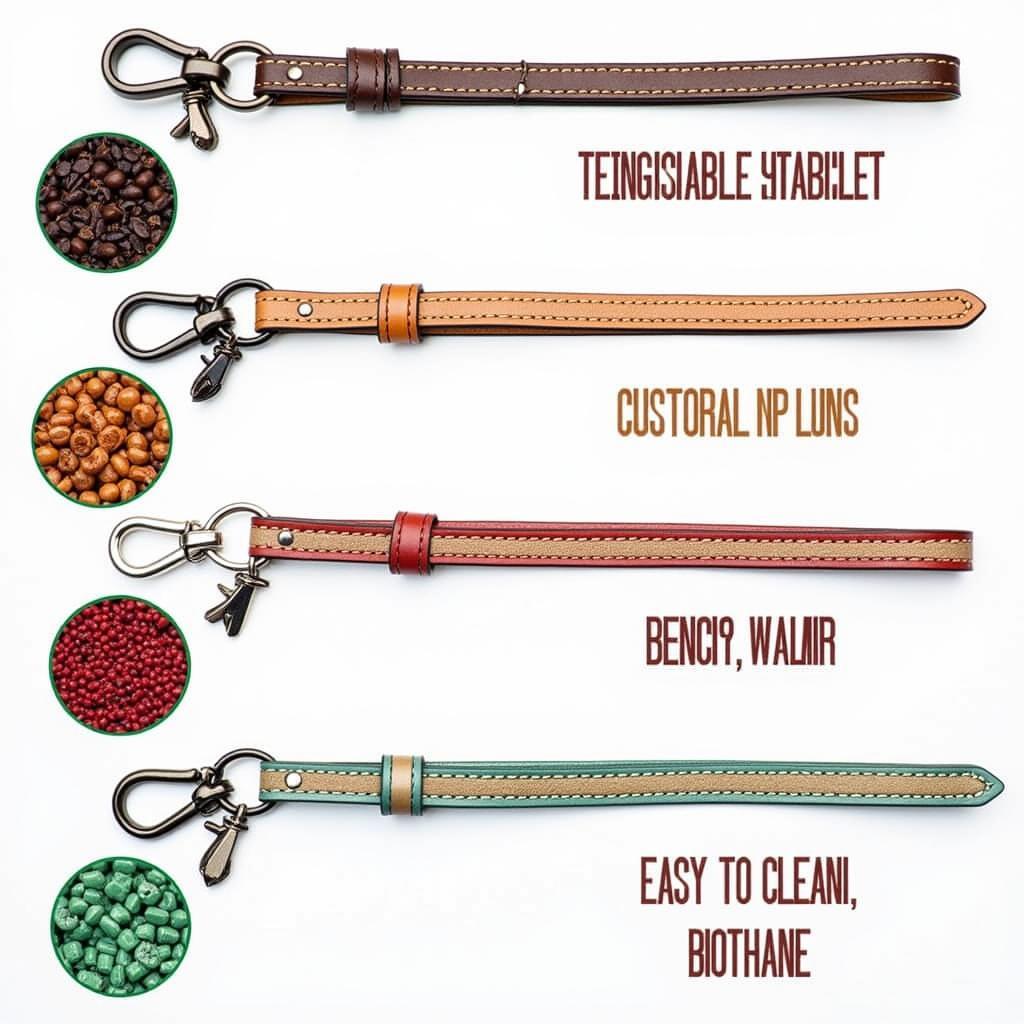Headstalls For Horses are a crucial piece of equipment for any rider, influencing both communication and control. Within the first few rides, you’ll realize the importance of selecting the perfect headstall. This guide will delve into the intricacies of choosing headstalls, covering everything from different styles and materials to fitting and maintenance.
Understanding Headstalls for Horses: A Comprehensive Guide
A horse headstall is more than just a bridle piece; it’s the foundation of effective communication between horse and rider. It’s comprised of several key components including the headpiece, browband, cheek pieces, throatlatch, and reins. The right headstall ensures comfort for the horse and provides the rider with necessary control. Choosing the correct one depends on a variety of factors, including the horse’s discipline, head shape, and the rider’s personal preference.
Types of Headstalls for Horses: Exploring Your Options
There are various types of headstalls designed for different disciplines and riding styles. For English riders, common options include snaffle bridles, double bridles, and Weymouth bridles. Western riders often choose between traditional headstalls, browband headstalls, and one ear headstalls. Understanding the nuances of each type is key to selecting the right one for your horse’s needs and your riding goals. Looking for horse headstalls for sale? Be sure to consider these different types.
Materials Matter: Leather, Synthetic, and More
Headstalls come in a range of materials, each with its pros and cons. Leather is a classic choice, prized for its durability, comfort, and traditional aesthetic. Synthetic materials like nylon and biothane offer affordability, easy maintenance, and a wide variety of colors. Understanding the properties of each material will help you choose a headstall that balances functionality, durability, and aesthetics.
 Various horse headstall materials: leather, nylon, biothane
Various horse headstall materials: leather, nylon, biothane
Fitting Your Horse’s Headstall: Ensuring Comfort and Control
Proper fit is paramount for both the horse’s comfort and the rider’s control. A poorly fitting headstall can cause discomfort, pressure points, and even behavioral issues. The browband shouldn’t be too tight or too loose, and the cheek pieces should allow for proper bit placement. The throatlatch should be adjusted to allow for two fingers to fit comfortably between it and the horse’s jaw. If you are looking for a specific type of headstall like one ear headstalls for horses, ensure the fit is still a priority.
Headstall Care and Maintenance: Extending the Life of Your Equipment
Regular cleaning and conditioning are essential for maintaining the integrity and longevity of your headstall. Leather headstalls benefit from regular conditioning to prevent drying and cracking. Synthetic materials can be easily cleaned with soap and water. Proper care will not only extend the lifespan of your headstall but also ensure its continued safety and functionality. Don’t forget to check buckles and stitching regularly for signs of wear and tear. You can even find beautiful beaded headstalls for horses that also require care and attention to detail.
How do I choose a headstall for my horse?
Consider your horse’s discipline, head shape, and your personal preferences. Proper fit is crucial, so measure your horse’s head.
What are the different types of headstalls?
Common types include snaffle bridles, double bridles, Weymouth bridles, traditional western headstalls, and browband headstalls.
What is the best material for a headstall?
Leather is a classic choice for durability and comfort, while synthetic materials offer affordability and easy maintenance.
How do I fit a headstall on my horse?
Ensure the browband, cheek pieces, and throatlatch are adjusted correctly, allowing for proper bit placement and comfortable fit. Check out our article about browband for horses for more detailed information.
How do I care for my horse’s headstall?
Regular cleaning and conditioning are essential. Leather requires more specialized care than synthetic materials.
“A well-fitted headstall is fundamental for clear communication between horse and rider,” says renowned equine expert, Dr. Amelia Hartman.
“Investing in a quality headstall can significantly improve your riding experience and enhance your horse’s performance,” adds master saddler, John Miller.
Choosing the right headstalls for horses is a crucial decision for any equestrian. By understanding the different types, materials, fitting techniques, and maintenance practices, you can ensure your horse’s comfort, safety, and optimal performance. Are you interested in draft horses? We also have a selection of used draft horse harness for sale.
If you need assistance, contact us at Phone Number: 0772127271, Email: [email protected] or visit our address: QGM2+WX2, Vị Trung, Vị Thuỷ, Hậu Giang, Vietnam. We have a 24/7 customer service team.